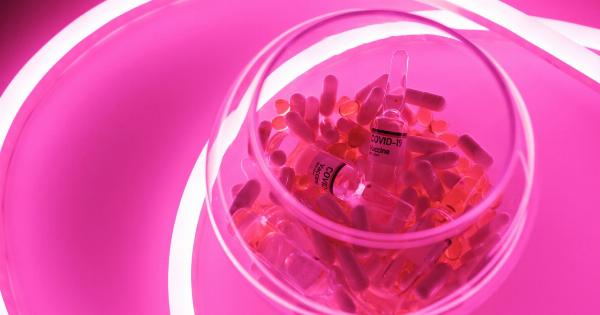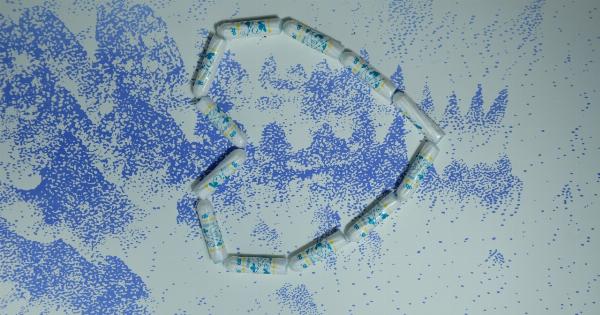In the constant battle against bacterial infections, scientists are continuously seeking new ways to combat the ever-evolving strains of bacteria.
One potential solution lies in nature itself, where the discovery of multipotent antibiotics has sparked great interest in the medical and scientific communities. These natural compounds have the ability to target a wide range of bacteria, making them potential game-changers in the fight against antibiotic-resistant infections.
In this article, we delve into the world of multipotent antibiotics, exploring their origins, mechanisms of action, and potential applications in safeguarding our body’s defenses.
What Are Multipotent Antibiotics?
Multipotent antibiotics, also known as broad-spectrum antibiotics, are compounds that have the ability to combat a wide variety of bacteria.
Unlike narrow-spectrum antibiotics that target specific types of bacteria, multipotent antibiotics have a broader range of action, making them effective against multiple bacterial strains.
Discovering Natural Multipotent Antibiotics
The search for multipotent antibiotics has led scientists to explore various natural sources such as plants, fungi, and even other animals.
One noteworthy example is the bacterium Streptomyces, which has been found to produce several multipotent antibiotics. This discovery has opened up new avenues for exploring the potential of natural compounds in fighting bacterial infections.
Mechanisms of Action
While the specific mechanisms of action can vary among different multipotent antibiotics, there are some common ways in which these compounds work to combat bacterial infections:.
1. Disruption of Cell Wall Synthesis
Many multipotent antibiotics interfere with the synthesis of bacterial cell walls.
By targeting the enzymes involved in cell wall formation, these compounds weaken the bacterial cell structure, making it more susceptible to destruction by the immune system.
2. Inhibition of Protein Synthesis
Another common mechanism involves the inhibition of bacterial protein synthesis.
Multipotent antibiotics can target ribosomes, the molecular machines responsible for building proteins, thus preventing bacteria from producing essential proteins necessary for their survival.
3. Interference with Nucleic Acid Synthesis
Some multipotent antibiotics disrupt the synthesis of bacterial DNA or RNA.
By targeting the enzymes responsible for DNA replication or RNA transcription, these antibiotics prevent bacteria from reproducing or expressing essential genes, halting their growth and multiplication.
4. Disruption of Cell Membrane Integrity
Certain multipotent antibiotics can disrupt the integrity of bacterial cell membranes. By targeting lipid components or pore-forming proteins, these compounds cause cell leakage, leading to the death of bacterial cells.
Applications in Medicine
The potential applications of multipotent antibiotics in medicine are vast. Here are a few notable examples:.
1. Treatment of Antibiotic-Resistant Infections
Antibiotic resistance is a major concern in healthcare today. Multipotent antibiotics have the potential to overcome resistance mechanisms employed by bacteria, making them valuable assets in the battle against drug-resistant infections.
2. Prevention of Surgical Infections
Surgical procedures carry a risk of post-operative infections. Multipotent antibiotics can be used prophylactically to reduce the risk of infection, ensuring better outcomes for patients.
3. Alternative to Broad-Spectrum Antibiotics
While broad-spectrum antibiotics are commonly used, their overuse contributes to the development of resistance.
Multipotent antibiotics could serve as alternatives, providing effective treatment while minimizing the selection pressure for resistant bacteria.
Challenges and Future Perspectives
Although multipotent antibiotics offer great promise, there are challenges to overcome in their development and utilization:.
1. Side Effects
Due to their broad spectrum of activity, multipotent antibiotics may also harm beneficial bacteria in the body, leading to disruptions in the microbiome. This can cause issues such as antibiotic-associated diarrhea or secondary infections.
2. Optimization of Dosage and Delivery
Developing the optimal dosage and delivery methods for multipotent antibiotics is crucial. Finding the balance between efficacy and minimizing side effects is essential in their successful deployment.
3. Identification of New Compounds
Continued exploration of natural sources is necessary to identify new multipotent antibiotics. Researchers must seek out novel compounds with unique mechanisms of action to combat the ever-increasing antibiotic resistance crisis.
Conclusion
Multipotent antibiotics offer hope in our ongoing battle against bacterial infections. By harnessing the power of nature, scientists and medical professionals can explore these compounds’ vast potential.
As the search for new antibiotics continues, multipotent antibiotics may play a crucial role in shielding our body’s defenses and ensuring a healthier future for all.




























